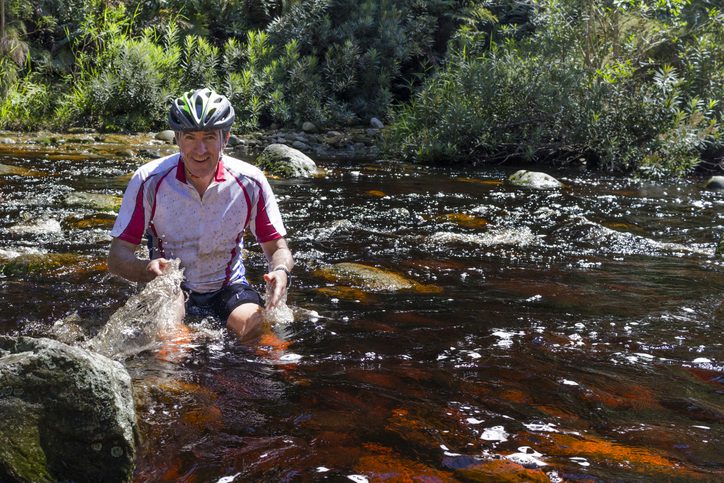How to deal with cycling in hot summer weather
Can you stand the heat?

Summer is that all-too-short season in Canada when the weather is warm and we can enjoy our long rides out on the open roads or trails. However, summer can also bring high heat and humidity. Look back at the summer of 2003 when a massive heat wave in Europe that lasted for weeks was blamed for tens of thousands of deaths. It makes you wonder if exercising in the heat is such a fabulous idea.
Our body temperature is normally about 37 C. In the heat, our body’s main defences include opening our skin blood vessels to release heat through conduction and convection, or else sweating and evaporating heat away from our bodies. If that doesn’t happen, then our core temperature will rise, eventually running into the danger of exertional heat illnesses like heat exhaustion or heat stroke.
Almost every system in your body can experience problems from being too hot. Your heart is under greater stress because it is trying to send blood to the muscles for exercise and the skin for heat dissipation. In the past decade, we have also seen that your brain’s ability to recruit muscles, the blood supply to your brain, and even gut function can be seriously impaired at high body temperatures.
So is riding in hot weather as bad as it sounds? The general scientific consensus is that, while you have to be careful, it’s not always a bad thing. The benefit of cycling is that the high windspeeds at even moderate cycling pace generate convective heat flow, so the body is able to dissipate a great amount of heat. This is compared to the much lower speeds found in running, which are used in most scientific studies discussing the dangers of the heat.
For cyclists, the exceptions to this can include mountain biking or extensive climbing on the road. These situations generate a lot of heat, but minimal air flow for cooling and the body can heat up rapidly. The other exception is when the air temperature is hotter than your body or if it’s very humid. In these cases, you can continue to gain heat no matter how fast you are riding.
The difficult question is “how hot is too hot?” There really is no absolute threshold for athletes. Being fit seems to provide some improved tolerance, as highly fit runners can spend much of a marathon at a body temperature above the 40 C that would land a sedentary individual in the emergency room. Being fit also seems to make being hot psychologically more tolerable.
Quick Tips
What can we do to stay safe in the heat?
- If possible, schedule your riding to avoid the hottest part of the day.
- Skip or decrease your warmup time, as your body temperature will rise quickly once you start the serious ride anyway. At the very least, try to stay out of the sun until you are ready to clip in.
- Make sure you are drinking adequately to replace fluid lost to sweat.
- Use sunscreen. When you are sunburnt, your skin blood vessels can get damaged and decrease your cooling and sweating ability.

